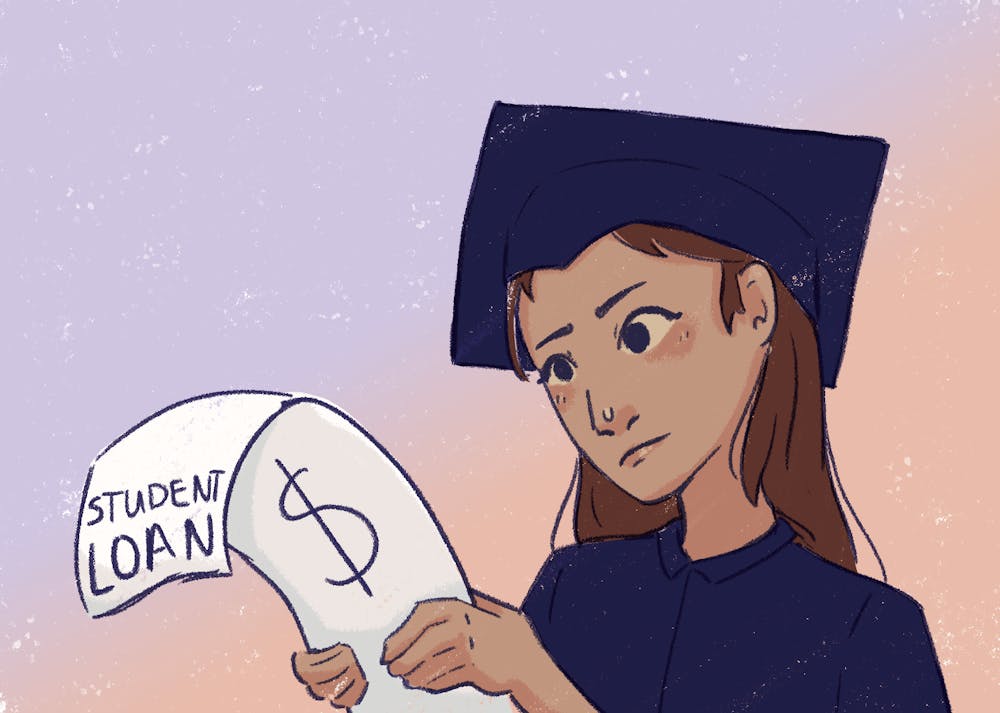As part of his 2020 campaign, President Joe Biden promised that he would forgive up to $10,000 in federal student loans per person, leading many students to vote for him.
The Trump administration paused student loan repayments in March 2020 when the COVID-19 pandemic began. Both the Trump and Biden administrations have extended the pause multiple times, most recently extending it until May 2022.
Forgiveness is becoming less likely with the deadline approaching and students continue to be frustrated with how the current administration has not delivered on its promise.
“In the beginning it felt like something very attainable to college students,” said Savhanna Freeman, a sophomore studying sustainability. “Now it's turned into you may or may not get any money from this, even though we've been talking a lot about it.”
The Biden administration has already forgiven $15 billion in student debt to over 675,000 students, specifically those who have been “taken advantage of” by for-profit universities, those with permanent disabilities, and others in the Public Service Loan Forgiveness program.
However, the $15 billion is only a small fraction of the estimated $1.75 trillion that Americans owed in student loans in 2021. Biden’s forgiveness thus far has also only affected about 1.6% of the 43.4 million borrowers nationally.
Henry Thomson, a political economist and assistant professor at ASU's School of Politics and Global Studies, said it is more difficult to forgive student loans than it seems. He said that increased student loans lead to higher tuition prices, and that tuition prices may increase if debts are forgiven.
"(Students would) be given a signal to take out even bigger loans, and the assumption that they're not going to pay in the end and the government is going to pay for them could actually have the effect of driving up the tuition inflation even more," Thomson said.
At public universities, in-state tuition and fees have increased by 211% over the past 20 years and out-of-state tuition and fees have risen 171%, according to U.S. News and World Report.
On Friday, ASU President Michael Crow proposed a 2.5% increase in tuition for on-campus resident students, a 4% increase for non-resident students and a 5% increase for international students for the 2022-23 academic year.
READ MORE: ASU President Michael Crow proposed tuition increases for 2022-23 academic year
Michaela Schillinger, a sophomore studying political science, is frustrated with the government’s lack of action on its promise. She thinks the Biden administration may lose young voters as a result.
“I think that Biden probably got a good amount of supporters because we thought that he had a better chance against Trump, and he was promising this student loan debt (forgiveness) so overall, I just think it is extremely disappointing,” Schillinger said. “I'm super happy for the people who are getting their student loan debt canceled as that is very much needed. It's just very saddening. I am angry."
Despite the slight progress the Biden administration has made, students like Freeman are not hopeful that they will see any loan forgiveness in the near future.
“I just asked around, and no one is hopeful or really believes that there's going to be any change with the student loan debt and all of the things that (Biden) has said in the past just feel empty,” Freeman said.
Dennis Hoffman, an economics professor at ASU, said certain people should benefit from forgiveness of loans, like those who went to for-profit universities, but he thinks that it would be difficult to satisfy the multiple sides of the issue from a political perspective.
“It is a political challenge,” Hoffman said. “I think there are some fiscal conservatives that are going to worry about the costs. There's a lot more complexity to this than just thinking about signing a piece of paper and moving on.”
Hoffman said that some of the complexity comes from people who have paid off their debt either partially or in full and could potentially take exception to a newer generation having their loans forgiven.
Student loans take an average of 20 years to fully repay, according to the Education Data Initiative. Hannah Guillermo, a sophomore studying finance, is attending ASU on student loans and worries about her long-term future.
“You're either on scholarship or taking out loans and like sometimes the loans, they do help, but it’s a lot because you're paying for the next 10 to 15 years of your life,” Guillermo said.
Biden recently hinted at extending the loan payment pause past May 2022. For students like Freeman, this is not enough, and it could hurt Biden politically.
"It's just pushing people's frustration with him not canceling the debt closer to the midterm elections, a time where he really needs support," Freeman said.
Reach the reporter at sbrenna5@asu.edu and @shanebrennan36 on Twitter
Like The State Press on Facebook and follow @statepress on Twitter.

Shane Brennan is the former Editor-in-Chief at The State Press and an ASU alum. He was a sports and politics reporter, before becoming the editor of the politics desk. He has covered local and state politics for the Arizona Capitol Times and Cronkite News.




